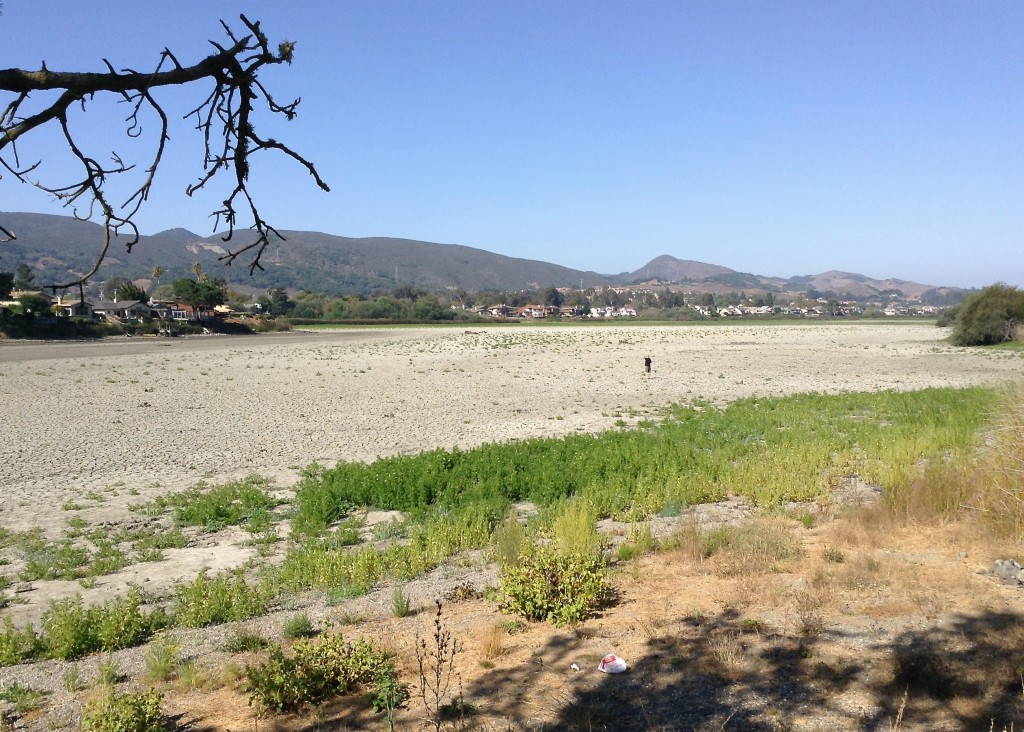Climate Change Poses Existential Water Risks

We often hear it said that climate change is too abstract to win the support needed to effectively combat it. But the primary way we will experience climate change is through the water cycle – through droughts, floods, depleted rivers, shrinking reservoirs, dried-out soils, melting glaciers, loss of snowpack and overall shortages of water to grow our food and supply our cities. If that’s not tangible enough to take action, I don’t know what is.
We’re already seeing this new world of water unfold before our eyes. And while I must add the obligatory caveat that scientists cannot prove that human-induced climate change is the cause of any single event we have witnessed (with the likely exception of the 2013-14 Australian heat waves), scientists do know – and warn – that these are the kinds of events to anticipate more of as climate change unfolds. Last week, a new study by researchers with the National Aeronautics and Space Administration and Cornell and Columbia Universities warned that the U.S. Southwest and Great Plains are almost certainly in for unprecedented “mega-droughts” during this century. Using 17 different state-of-the-art climate models, the scientists found “a coherent and robust drying response to warming.” The findings were published in the journal Science Advances.
Under scenarios of both moderate and high greenhouse gas emissions, the team concludes that these regions can expect drought periods even more severe than the driest centuries of the last millennium. It was after one of those long droughts that the Hohokam, an advanced, irrigation-based civilization that thrived for a thousand years in what is now the Phoenix area, disappeared.
A 2010 study led by Connie A. Woodhouse at the University of Arizona in Tucson examined paleo-climatic records to place the decade-long drought in the Colorado River Basin (now a 14-year drought) in the context of the last 1,200 years. Woodhouse and her colleagues found that, as bad as this current drought is, at least so far it pales in comparison to the two decades of drought during the middle of the 12th-century.
That so-called medieval drought was more severe, widespread, and longer lasting than any other in the Southwest over the past 12 centuries. The just-published Science Advances study warns that future droughts during the 21st century could be even worse. With each new study that reveals the coming impacts of climate change, I’m reminded of a comment by Sara Parkin, co-founder of the UK-based Forum for the Future, many years ago at a gathering in Washington, DC. On the tombstone of humanity, Parkin said, the inscription will read: “They documented their demise impeccably, but didn’t do a whit to stop it.”
While halting climate change is not possible, preventing the worst of it and adapting to its anticipated consequences is possible. There is opportunity in crisis, but only if we seize it. With each passing year, however, this window of opportunity narrows. Consider the response to date to droughts in Texas, California and elsewhere. While farms and cities implement modest conservation measures to cope with shortages, the predominant response to drought-induced depletion of surface water supplies has been to pump more groundwater.
Those underground supplies are society’s best insurance policy against more severe or prolonged droughts in the future. But instead of saving that water for an even drier day, we are raiding the water bank now.
Over the last decade, some 41 million acre-feet (50.6 billion cubic meters) of groundwater has been depleted from the Colorado River Basin. Unless those underground reserves are replenished, the basin’s farms and cities will have less water to see them through the more severe droughts expected during this century. Already, about 10 percent of the world’s food is produced by overpumping groundwater. In essence, we are using tomorrow’s water to meet today’s needs — a theft from the future likely to grow as droughts worsen and spread.
Similarly, the one-two punch of massive flooding followed by flow-depleting drought in the Mississippi River Basin during 2011 and 2012 will likely be repeated as climate change unfolds. But the impacts can be lessened by strategically re-building the basin’s ecological infrastructure – in particular, by bringing water-absorbing wetlands back into action in the upper watershed. Scientists cannot write the playbook for climate impacts, but they’ve already provided enough of an outline of the narrative ahead for society to get to work preparing, adapting, and building resilience in our water systems.
Source:
Sandra Postel. National Geography. http://voices.nationalgeographic.com/2015/02/17/climate-change-poses-existential-water-risks/

